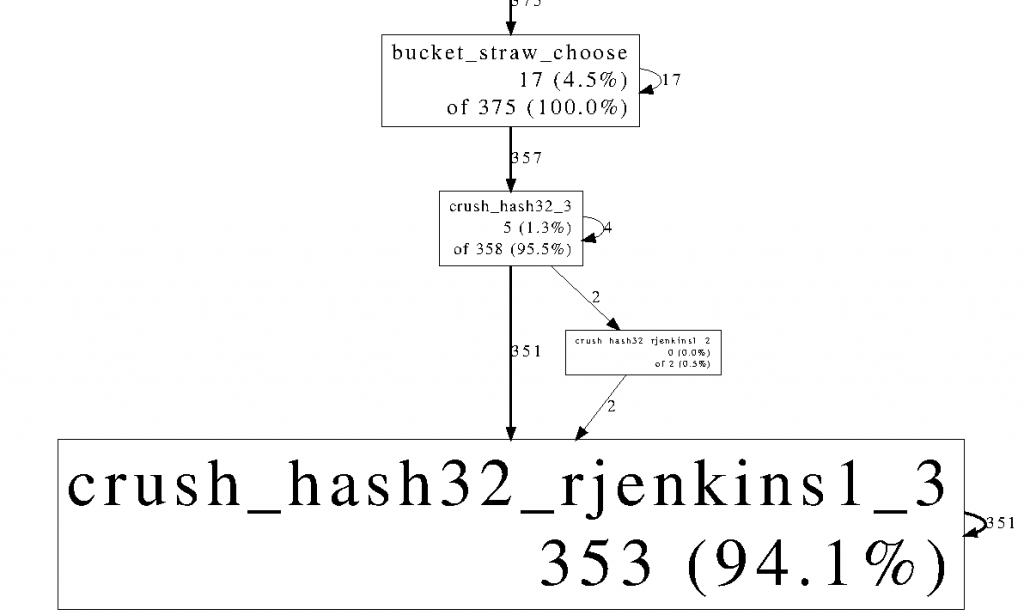The erasure code implementation in Ceph relies on the jerasure library. It is packaged into a plugin that is dynamically loaded by erasure coded pools.
The ceph_erasure_code_benchmark is implemented to help benchmark the competing erasure code plugins implementations and to find the best parameters for a given plugin. It shows the jerasure technique cauchy_good with a packet size of 3072 to be the most efficient on a Intel(R) Xeon(R) CPU E3-1245 V2 @ 3.40GHz when compiled with gcc version 4.6.3 (Ubuntu/Linaro 4.6.3-1ubuntu5). The test was done assuming each object is spread over six OSDs and two extra OSDs are used for parity ( K=6 and M=2 ).
- Encoding: 4.2GB/s
- Decoding: no processing necessary (because the code is systematic)
- Recovering the loss of one OSD: 10GB/s
- Recovering the loss of two OSD: 3.2GB/s
The processing is done on the primary OSDs and therefore distributed on the Ceph cluster. Encoding and decoding is an order of magnitude faster than the typical storage hardware throughput.
Continue reading “Benchmarking Ceph erasure code plugins”



